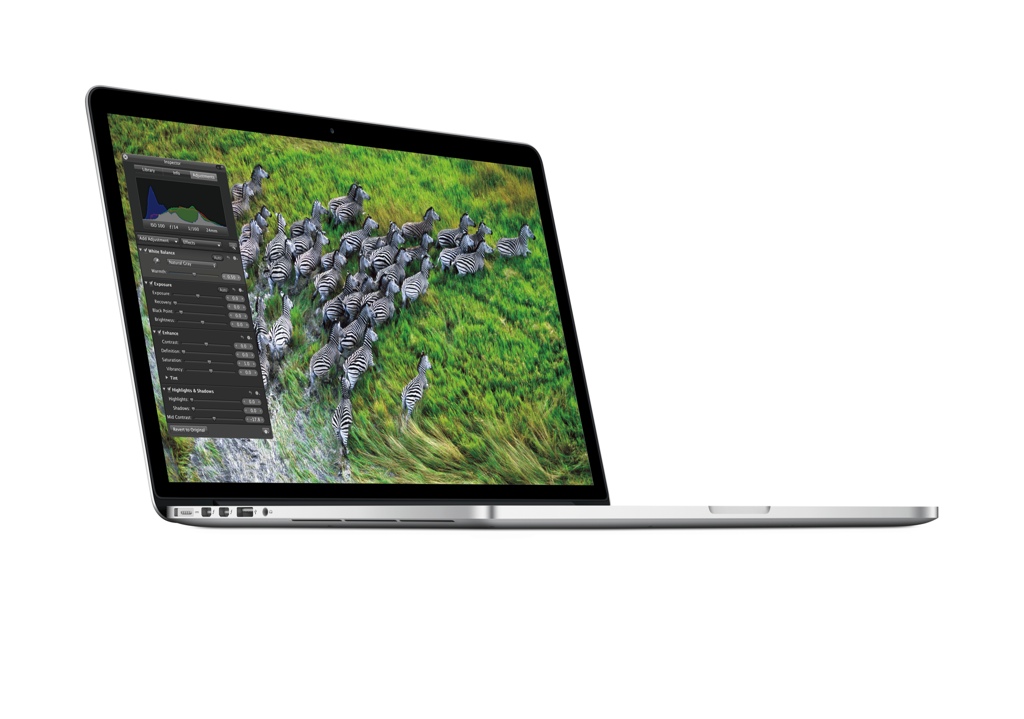Day 1
Setting up my MacBook Pro was fairly easy. I just had to use the Migration Assistant to bring the data from my iMac and two hours later everything was in place. Really sweet!
Using a computer with a Retina display is awesome. The feeling is similar to what I experienced when I first used an iPad with a Retina display back in March 2012: it feels like when you change you reading glasses and suddenly everything is sharper. Browsing the web, editing photos, watching videos, playing games — everything gets sharper and better looking on this display.
I also powered up my Ubuntu virtual machine to check how it looks, and it’s superb, apart from the very small fonts.
Day one didn’t hit me with many surprises; it was just a shakedown run. Day two, on the other hand…
Day 2
I decided to use Boot Camp to partition the disk and install Windows 8 for gaming, just like I did on my previous iMac. The first thing I noticed is that I didn’t make a backup of my Windows 8 ISO after I downloaded it from Microsoft, so I had to install Windows 7 and then upgrade using Windows 8 Update Assistant. As always, Boot Camp worked like a charm: it correctly partitioned my SSD, downloaded all the required updates and started the Windows installation. Upgrade to Windows 8 also worked well (and I made an ISO backup this time). Then, disaster…
I opened the Disk Manager to double-check if my partition sizes were correct, but for some reason (and I may have done something stupid at 3AM), it rewrote my partition table and I lost boot access to my OS X partition. Result: Internet Restore on the Mac and installing everything again. That was day two.
Lessons learned: never mess with Disk Manager on a dual-boot Mac, and never do important things at 3AM when your sleep is due.
Day 3
Day 3 was when I finally started using this machine properly. I played Hitman: Absolution for a bit on Windows 8 to check graphics performance (way better than my previous iMac), and used OS X and Ubuntu like I always do.
OS X runs really smoothly on the Retina MacBook Pro. I can keep all the apps I need open thanks to the 16GB of RAM: TextMate, Safari, Chrome, VMWare Fusion, Terminal, Mail, Tweetbot, Pocket, OmniFocus, Evernote, 1Password, Calendar and iMessage. And the fast SSD allows me to properly use the Resume feature on OS X and have everything back open in no time after a reboot.
My Ubuntu virtual machine runs on 4 cores and 4GB of RAM, so it’s fast. I can do most of my software development experiments on it and seamlessly switch to my productivity apps on OS X. Task switching is instant on this MacBook, and I haven’t found a task yet that affects performance badly.
One of the greatest advantages of having a power notebook is that I don’t have to sit in my home office anymore to do the heavyweight tasks, like editing photos or videos, or writing and compiling code. I still use the iPad Mini for most of the mundane tasks, like reading and web browsing, but having a proper mobile workstation is definitely a plus.
I also noticed that my eyes thanked the Retina display a lot. My eye fatigue after using this notebook for hours is reduced, when compared with traditional displays, like the one on the MacBook Air I had.
For now, I am really enjoying this machine. Apple did a great job on this particular notebook and I highly recommend it. Next week I’ll be traveling with it, so I’ll get to know better how it performs as a mobile workstation. Stay tuned!
* all images are property of Apple Inc. Used with permission.
